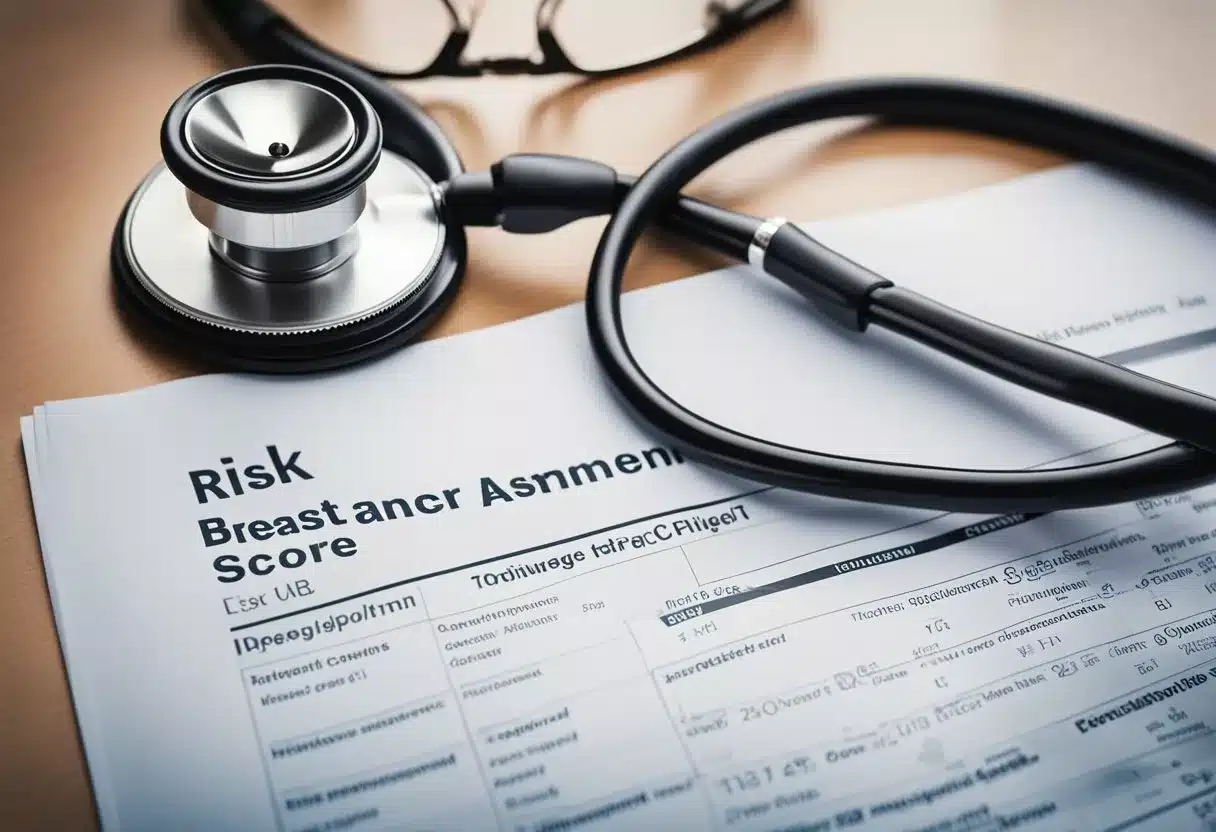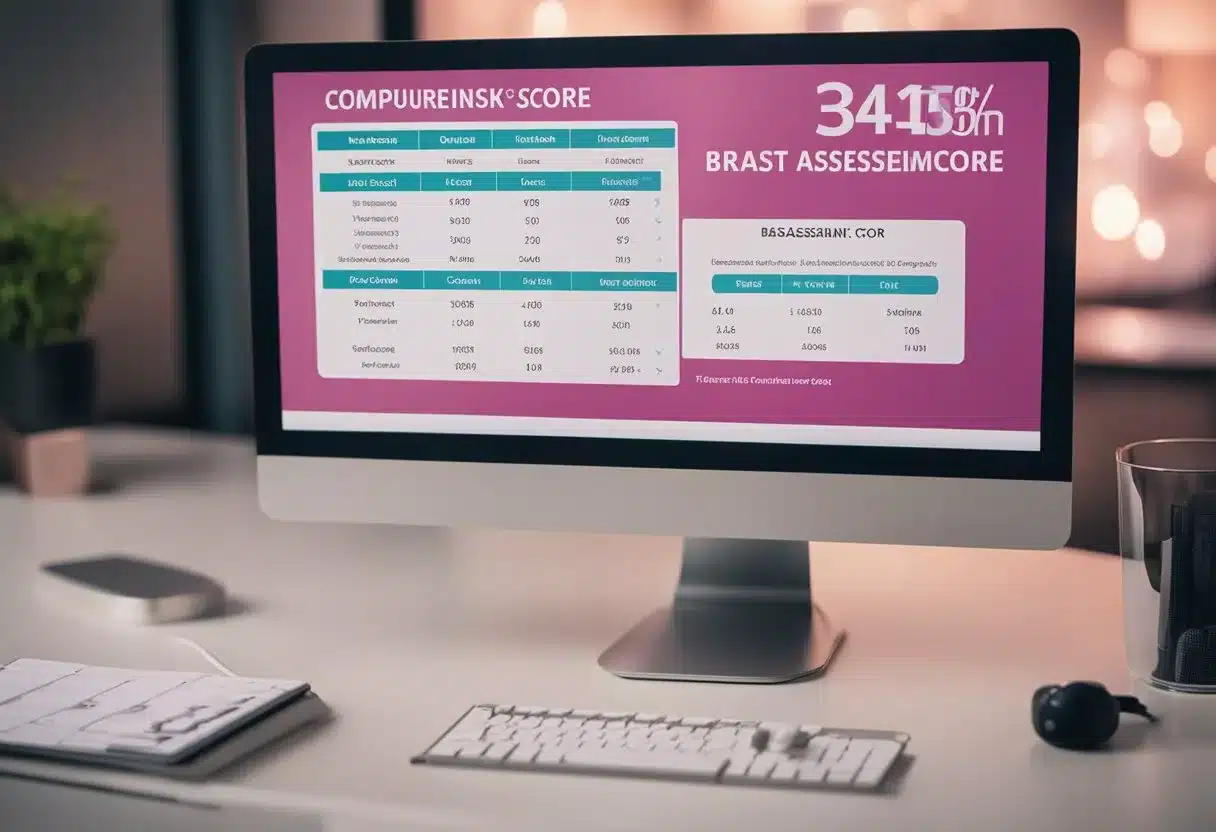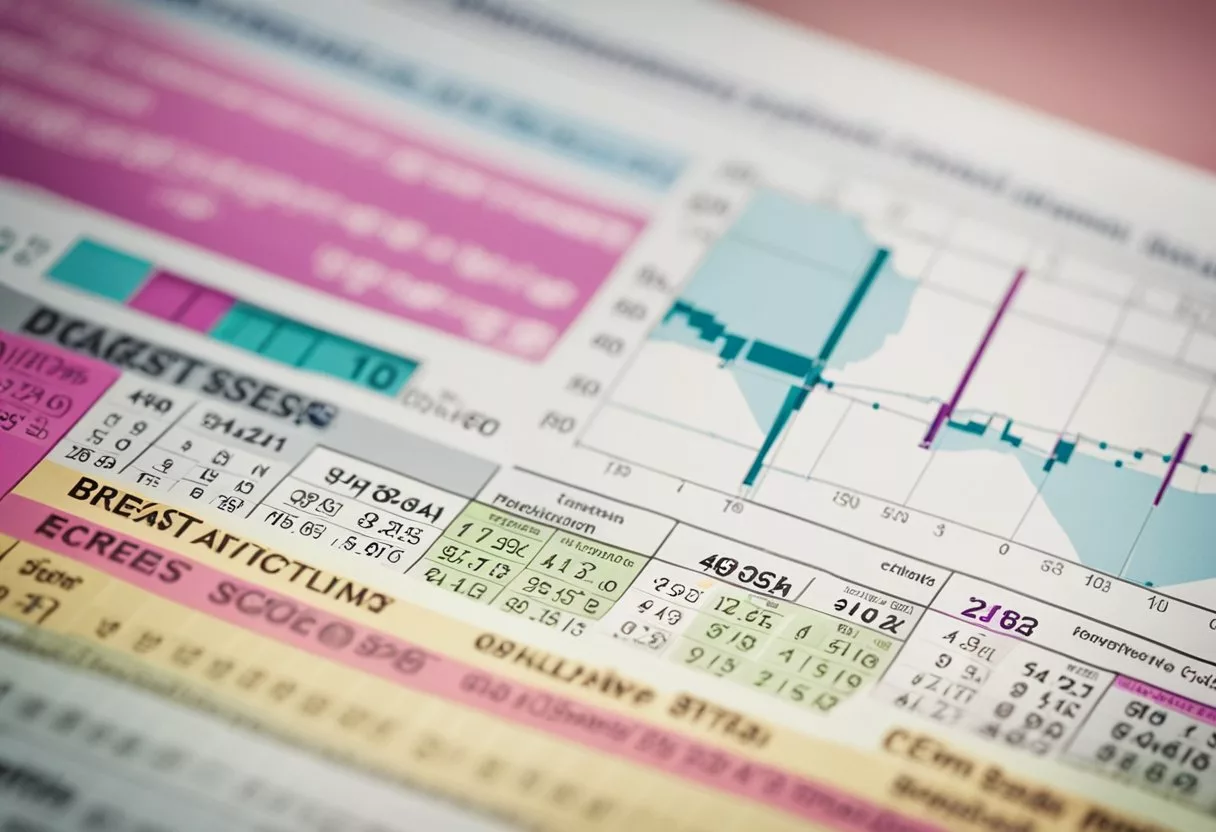Understanding your risk for breast cancer is crucial for early detection and effective management. A breast cancer risk assessment score helps predict your chance of developing breast cancer within a specific timeframe, using your personal and family medical history. This score is an essential tool for women to make informed decisions about their health.

Various models like the Gail Model, the Tyrer-Cuzick Risk Calculator, and others, utilize information such as age, genetic mutations, hormone exposure, and lifestyle factors to estimate this risk. Tools like the Breast Cancer Risk Assessment Tool from the National Cancer Institute offer validated and reliable calculations.
Knowing your breast cancer risk score can guide discussions with your healthcare provider about the appropriate screening tests and preventive measures. Stay ahead by utilizing these resources to better understand your risk and take proactive steps in managing your health.
Key Takeaways
- Breast cancer risk scores predict the chance of developing the disease based on history.
- Various models and tools provide reliable breast cancer risk assessments.
- Knowing your risk helps in making informed healthcare decisions.
Understanding Breast Cancer Risk

Breast cancer risk is influenced by several factors such as age, genetic mutations, and family history. Each of these components plays a critical role in determining an individual’s likelihood of developing the disease.
Fundamentals of Breast Cancer Risk
Breast cancer risk assessment tools evaluate various elements to estimate a person’s risk. These tools often look at medical history, reproductive history, and family history.
For instance, models like the Gail Model use these details to predict the probability of developing invasive breast cancer over five years and up to age 90. Tools like this are vital for healthcare providers to create personalized screening plans.
Family history, particularly breast cancer in first-degree relatives, raises the risk significantly. Knowing these factors helps in early detection and prevention strategies.
Role of Age in Cancer Development
Age is a significant factor in breast cancer risk. As people age, the likelihood of developing breast cancer increases. Most cases are diagnosed in women over the age of 50.
The reason older age is a risk factor is due to changes in the body over time. Around this age, there may be more accumulated damage to the cells.
Also, regular screenings like mammograms become more crucial as individuals age. The frequency of these screenings may be adjusted based on age and other risk factors.
Influence of Genetic Mutations
Genetic mutations, such as those in the BRCA1 and BRCA2 genes, significantly increase breast cancer risk. These mutations can be inherited, and they markedly heighten the chances of developing breast cancer at a younger age.
Mutations in BRCA1 and BRCA2 also increase the risk of ovarian cancer. Women with these mutations often undergo more frequent screenings and may consider preventive surgeries.
Family history of these mutations can guide genetic testing and counseling. Early identification of these mutations allows for tailored surveillance and preventive measures.
Understanding these risk factors helps individuals and their healthcare providers make informed decisions about prevention and early detection strategies. By assessing these elements, it’s possible to manage and reduce the risk of developing breast cancer effectively.
Epidemiology and Demographics
Breast cancer incidence varies across different racial and ethnic groups and significantly differs by geographic location. Understanding these differences is key to tailoring effective screening and prevention strategies.
Breast Cancer Incidence by Race and Ethnicity
In the United States, breast cancer is the most commonly diagnosed cancer in women. Incidence rates differ significantly by race and ethnicity. White women have the highest incidence rates of breast cancer. Black women also face high incidence rates, but they often present with more aggressive forms of the disease and at a younger age.
Hispanic women tend to have lower incidence rates compared to White and Black women, yet they are more likely to be diagnosed at a later stage. Asian and Pacific Islander women generally have lower incidence rates of breast cancer. Despite lower rates, certain subgroups within this population may have higher risks due to genetic and environmental factors. Understanding these variations helps in developing targeted breast cancer screening and prevention programs.
Differences in Risk by Geographic Location
Geographic location also plays a crucial role in breast cancer incidence. Women living in urban areas in the United States often have higher incidence rates compared to those in rural areas. This difference might be due to access to healthcare facilities, lifestyle factors, and environmental exposures.
Globally, breast cancer incidence is higher in developed countries compared to developing nations. Lifestyle factors such as diet, physical activity, and reproductive behaviors contribute to these differences. Additionally, access to and use of screening programs can significantly influence identified incidence rates. For example, countries with organized screening programs often report higher incidence rates due to early detection, which improves outcomes and survival rates.
Risk Factors and Assessment Models

Breast cancer risk can be influenced by various factors, including environmental and lifestyle choices, breast density, and personal and family medical history. Different models help estimate this risk.
Environmental and Lifestyle Factors
Environmental and lifestyle choices play a significant role in breast cancer risk. Smoking, alcohol consumption, and a sedentary lifestyle can increase the likelihood of developing breast cancer.
Diet also matters. Diets high in processed foods and sugars may contribute to risk. Conversely, regular physical activity and a balanced diet can reduce it.
Exposure to certain chemicals and hormones in the environment can be critical. Some studies suggest that prolonged exposure to estrogen, whether through hormone replacement therapy or early menstruation, may boost risk levels.
Breast Density and Its Impact on Risk
Breast density is another key factor in assessing breast cancer risk. Dense breasts have less fatty tissue and more glandular and fibrous tissue, which can make mammograms harder to read.
High breast density is linked to a higher chance of breast cancer. Dense tissue can mask tumors, making them hard to detect early. Women with dense breasts should discuss additional screening options with their healthcare providers.
Breast density changes with age and other factors like hormonal changes. Monitoring these changes can help in early detection and risk assessment.
Predictive Models for Risk Estimation
Several models help estimate breast cancer risk, including the Gail Model, which considers personal and family medical history, reproductive history, and age. This model calculates risk over the next five years and up to age 90.
Another notable model is the Tyrer-Cuzick Model or IBIS tool, which uses a wide range of factors to estimate risk over ten years and a lifetime. It includes family history of cancer and personal health history.
Healthcare providers use these models to determine how often screenings are needed. These assessments help in early detection, improving the chances of successful treatment.
Screening and Detection

Screening and detection of breast cancer involve several important methods to ensure early identification and treatment. Key methods include mammograms, adherence to screening guidelines, and genetic testing to evaluate risk factors.
The Role of Mammograms in Early Detection
Mammograms are X-ray examinations of the breast. They are crucial for detecting breast cancer early, often before symptoms appear. Early detection through mammograms can significantly improve survival rates.
Types of Mammograms:
- 2D Mammogram: Traditional method capturing two images of each breast.
- 3D Mammogram: Provides more detailed images, improving accuracy.
Organizations like the American Cancer Society recommend regular mammograms for women starting at age 40. They emphasize the importance of discussing with healthcare providers to determine the best screening plan.
Breast Cancer Screening Guidelines
Screening guidelines outline when and how often women should get screened. Factors like age, family history, and personal health influence these recommendations.
General Recommendations:
- Starting Age: Regular screening from age 40-45.
- Frequency: Annual or biennial mammograms depending on risk factors and doctor’s advice.
- Deciding Factors: Personal health history and family history of breast cancer.
The American Cancer Society guidelines are designed to minimize risks by suggesting appropriate screening intervals. Regular follow-up and consultation with doctors ensure adherence to these guidelines, thus optimizing early detection.
Genetic Testing and Counseling
Genetic testing identifies mutations in genes such as BRCA1 and BRCA2, which significantly increase breast cancer risk. Women with a family history of breast cancer should consider genetic testing to make informed decisions about their health.
Process:
- Blood or Saliva Test: Detects genetic mutations.
- Genetic Counseling: Helps understand test results and implications.
Providers may use tools like the Breast Cancer Risk Assessment Tool to estimate risk. Counseling is vital as it guides women through preventive measures and coping strategies if they carry high-risk mutations. Genetic testing combined with professional counseling supports tailored screening strategies, enhancing early detection and prevention.
Each of these elements plays a critical role in the effective screening and detection of breast cancer, fostering timely intervention and improved outcomes.
Clinical Implications and Management

Effective breast cancer risk assessment can greatly impact clinical decisions. This includes identifying the best treatment options, planning follow-up care, and considering preventive measures and medications.
Breast Cancer Treatment Options
There are various treatment options available for breast cancer, tailored to the individual’s risk level and type of cancer. Common methods include surgery, radiation therapy, and chemotherapy.
Surgery can be a lumpectomy, removing only the tumor, or a mastectomy, removing one or both breasts. Radiation therapy targets cancer cells that remain after surgery. Chemotherapy uses drugs to kill cancer cells or stop them from growing.
The choice of treatment depends on the risk assessment tool outcomes and patient-specific factors such as age, health status, and cancer stage.
Follow-Up Care and Surveillance
After initial treatment, follow-up care is crucial to monitor for any recurrence of cancer. Regular check-ups typically include physical exams, mammograms, and possibly MRI scans.
These follow-up visits help in early detection of recurrence and managing any long-term side effects of treatment. The frequency and type of follow-up depend on various factors including the initial cancer stage and treatment received.
Keeping detailed medical records and maintaining communication with healthcare providers supports effective surveillance strategies, as does adhering to the recommended follow-up schedule.
Preventative Strategies and Medications
Preventative strategies can significantly reduce the risk of developing breast cancer. These include lifestyle changes such as maintaining a healthy weight, limiting alcohol intake, and engaging in regular physical activity.
Medications like tamoxifen and raloxifene can be prescribed to lower breast cancer risk in high-risk women, as determined by risk assessment tools like the Gail Model. These medications work by blocking estrogen receptors, which can prevent the growth of estrogen receptor-positive breast cancer cells.
Additionally, genetic counseling and testing may be recommended for those with a strong family history of breast cancer, enabling more personalized preventive measures and treatments.
Personalizing Risk Assessment
Personalizing breast cancer risk assessment helps tailor prevention and screening strategies based on an individual’s unique factors. This method aims to provide a more accurate prediction of risk levels for each person.
Individual Risk Calculation
Using tools like the Breast Cancer Risk Assessment Tool (BCRAT), medical professionals can estimate a woman’s probability of developing invasive breast cancer. This calculation takes into account personal history elements such as reproductive history, age, and family history of breast cancer. These tools result in a risk score that reflects the likelihood of developing breast cancer over the next five years and up to age 90.
The Tyrer-Cuzick Risk Calculator is another tool used to calculate risk. It considers a broader range of factors, including genetic predispositions and personal medical history. The results from these calculators help identify high-risk individuals who may benefit from more frequent screenings or preventive measures.
Factors Contributing to Personal Risk
Several factors contribute to an individual’s breast cancer risk. Age is a significant factor, with risk increasing as a woman gets older. Family history, especially first-degree relatives with breast cancer, also notably raises risk levels. Genetic mutations like BRCA1 and BRCA2 play a crucial role in assessing risk.
Personal medical history including past breast biopsies can influence a person’s risk score. Hormonal factors such as age at first menstrual period and age at first live birth also affect the assessment. The Cleveland Clinic outlines that these combined factors give a comprehensive picture of an individual’s risk.
Discussion of Risk with Healthcare Providers
It’s vital for individuals to discuss their risk assessment scores with healthcare providers. These discussions help interpret the results and determine the best course of action. High-risk individuals might consider genetic counseling, enhanced screening protocols, or preventive medications.
The Mayo Clinic emphasizes the importance of personalized discussions, especially across diverse populations that may have unique risk factors. Understanding and communicating these risks effectively allows for tailored preventive strategies that can improve outcomes and provide peace of mind.
Recent Advances and Research Trends

Recent research in breast cancer risk assessment has led to significant innovations in tools and models. These advances improve the precision of risk predictions and address various limitations seen in earlier methods.
Innovations in Risk Assessment Tools
New tools for breast cancer risk assessment have been developed to enhance precision and inclusivity. The Comprehensive Inherited Risk Estimation method uses family history and pathogenic variants. This tool provides a more detailed risk profile for individuals with a genetic predisposition.
Polygenic risk scores (PRS) combine data from common genetic markers to predict risk. This innovation helps stratify individuals within the general population, improving the screening process. Additionally, mammography-based approaches are being refined. A study from 2019 highlighted the importance of matching cases by age, ethnicity, and BMI, which ensures more accurate risk estimates.
Validation and Limitations of Current Models
Several models, including the IBIS and the Breast Cancer Risk Assessment Tool (BCRAT), are widely used. Validation of these models shows they are effective but have limitations. Training and education gaps among healthcare providers can hinder the effective use of these tools.
Concerns about discussing breast density and the implications of risk assessment also pose challenges, as found in a study on primary care barriers. Moreover, while models like IBIS incorporate family history and genetic markers, they may still miss other significant risk factors, limiting their predictive power.
Future Directions in Risk Prediction
Future research in breast cancer risk prediction aims to refine current models and develop new ones. Precision medicine is a promising approach, focusing on increasing surveillance in high-risk women while reducing unnecessary imaging for those at lower risk.
Emerging trends include integrating more diverse data sets and improving genetic screening technologies. These advancements promise to create more accurate and inclusive risk assessment tools. Efforts are also underway to enhance education for healthcare providers to ensure effective implementation of these advanced models in clinical practice.
Support and Resources

Understanding and managing breast cancer risk involves accessing various educational tools and community support systems. This section explores key resources for patient education and community support, focusing on clear and actionable guidelines.
Patient Education and Awareness
Educational tools play a crucial role in helping individuals understand their breast cancer risk assessment scores. Websites like Breast Cancer Risk Assessment Tool provide detailed calculators to estimate risk levels based on personal medical history.
Healthcare providers often use these tools to inform patients about the necessary steps for regular screening. For instance, Cleveland Clinic’s guidelines detail how various factors like age and family history impact risk scores and recommend the frequency of mammograms.
Counseling services are essential for interpreting these scores. Genetic counseling can help patients understand the implications of their risk levels and discuss preventive measures, such as lifestyle changes or preventative medications.
Community Support and Advocacy
Community support groups provide emotional support and practical advice for those at risk. Organizations like Susan G. Komen offer resources to connect individuals with local support groups, educational workshops, and advocacy programs.
Advocacy programs aim to raise awareness and push for better policies. They often organize events and campaigns to educate the public and support those affected by breast cancer. For example, the Breast Cancer Research Foundation focuses on funding research to improve understanding and treatment of the disease.
Guidelines for support often recommend joining these groups not just for help during treatment but also for ongoing education and solidarity. They provide a platform to share experiences and gain insights into managing risk and treatment options.
Frequently Asked Questions

Understanding breast cancer risk assessment scores involves knowing how different models calculate risk and the factors they include.
How is breast cancer risk calculated using the Gail model?
The Gail model, also known as the Breast Cancer Risk Assessment Tool (BCRAT), estimates the risk of developing invasive breast cancer. It considers a woman’s personal medical and reproductive history and the history of breast cancer among her first-degree relatives.
What factors are considered in the Mayo Clinic breast cancer risk assessment?
The Mayo Clinic breast cancer risk assessment includes several aspects of a woman’s gynecologic health, personal history of breast biopsies, and family history. These factors help calculate whether she may be more likely than average to develop breast cancer.
How does the IBIS tool differ from other breast cancer risk calculators?
The IBIS Risk Calculator, also known as the Tyrer-Cuzick model, evaluates both personal and family history to determine lifetime risk. It provides detailed risk scores and is mainly used for individuals with a significant family history or genetic predispositions.
What determines a high breast cancer risk score in these models?
A high breast cancer risk score is determined by several factors, including age, family history of breast cancer, genetic mutations, and personal health history. Models like the Gail model and IBIS tool use these inputs to estimate the likelihood of developing the disease over a specific period or lifetime.
What is the role of the NCI’s Breast Cancer Risk Assessment Tool in evaluating risk?
The National Cancer Institute’s Breast Cancer Risk Assessment Tool (Gail model) helps health professionals estimate a woman’s risk of developing invasive breast cancer over five years and up to age 90. It is a widely-used tool for gauging risk and aiding in screening decisions.
How often should one use a breast cancer risk assessment calculator for screening purposes?
The frequency of using a breast cancer risk assessment calculator can vary. It is generally recommended to discuss with a healthcare provider to determine the best schedule. Regular screening and re-evaluation may be necessary if risk factors change or as a woman ages.